Abstract
The effect of ambient temperature and humidity on the structure of respiratory epithelium of calves was studied. Four calves of each of three experiments were acclimatized to a nonoperational environmental chamber for six days and then exposed to constant extremes of temperatures and relative humidity of one of 30 degrees C --35%, or 27 degrees C--92%, or 5 degrees C--92% respectively in this chamber for eight days each. Five calves (3 and 2) were similarly acclimatized then exposed to 1 degrees C--40%. Nasal swabs were taken from all animals at regular intervals. Swabs of three animals yielded Mycoplasma spp. and one swab yielded the virus of infectious bovine rhinotracheitis. Detailed histological studies of respiratory epithelium of nose, trachea, major bronchus and terminal bronchioli were conducted at four sites. Goblet cells were least in calves held in hot and dry air; calves held in dry air had the least polymorphonuclear cells and the greatest prevalence of hypochromatic cell layers and vacuolation of epithelial cells. Differences between experiments were evident most for sites of trachea and major bronchus.
Full text
PDF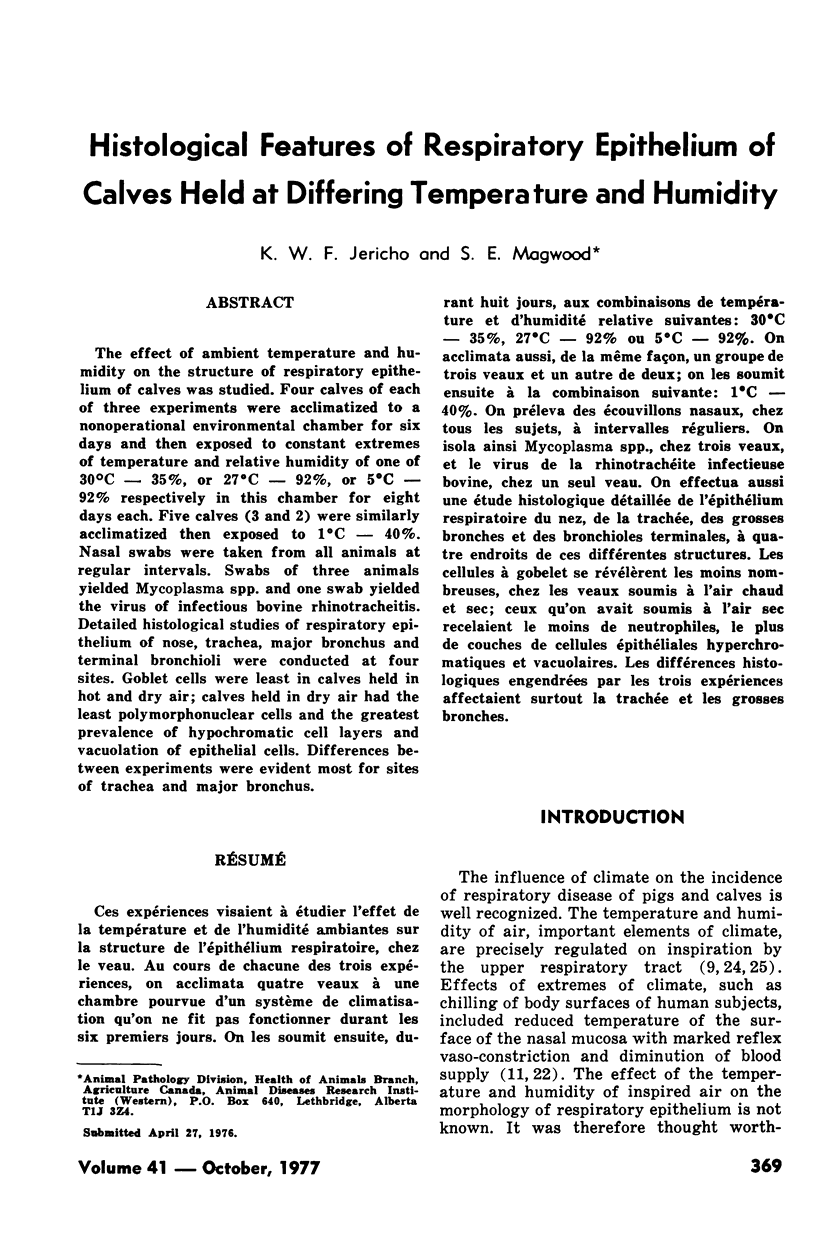
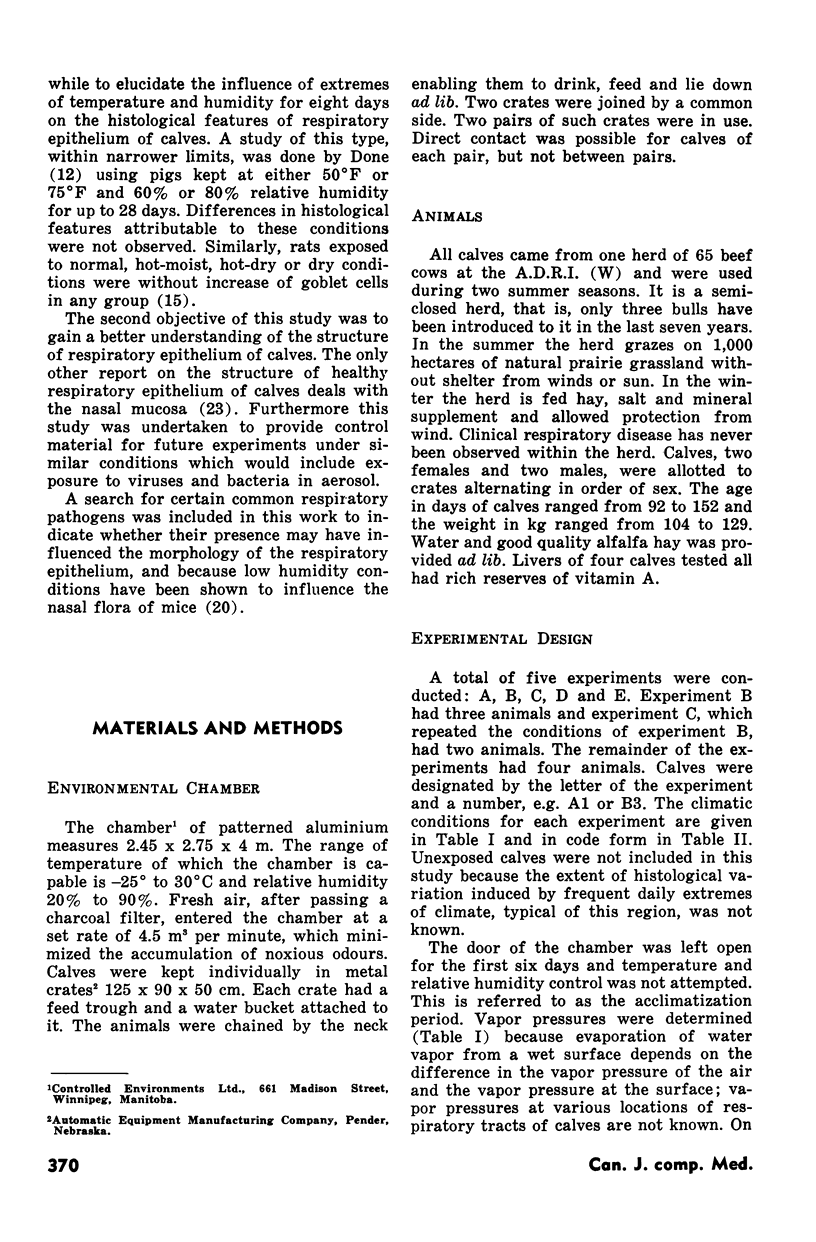

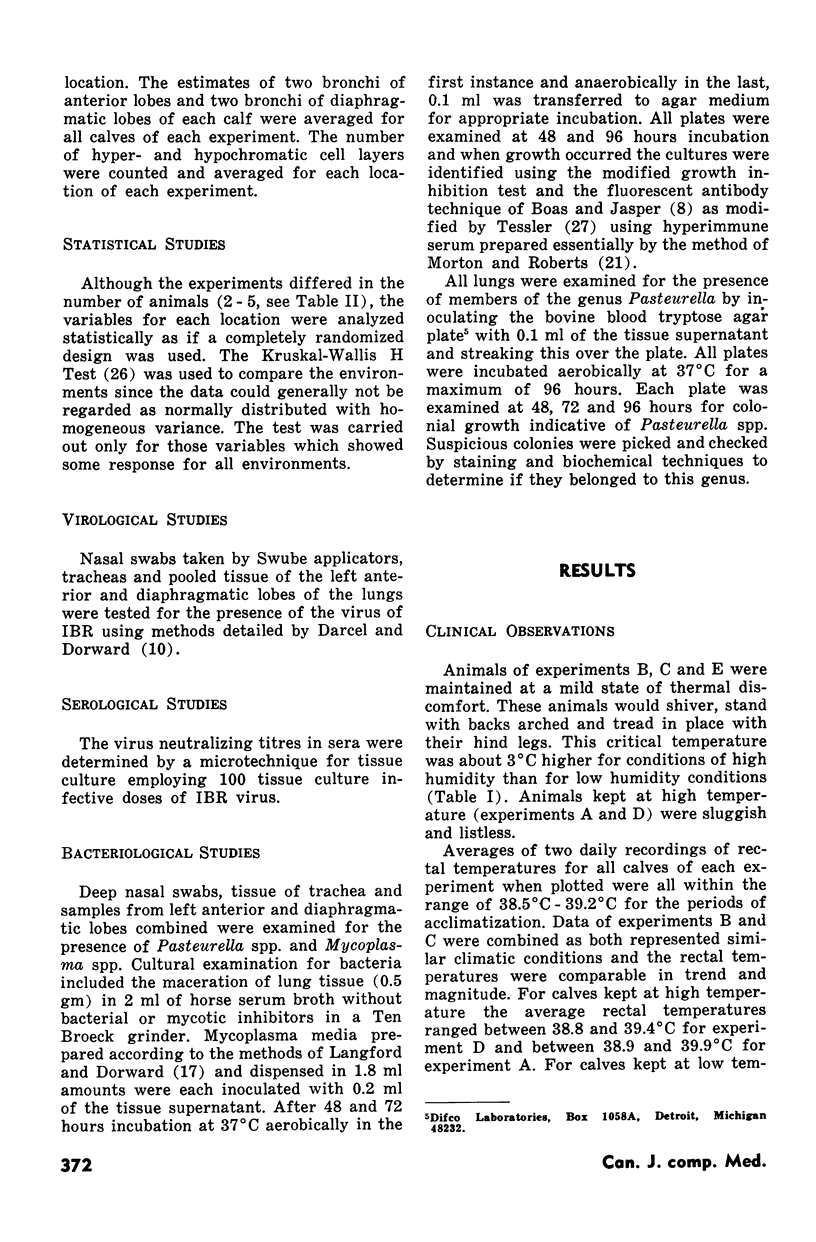
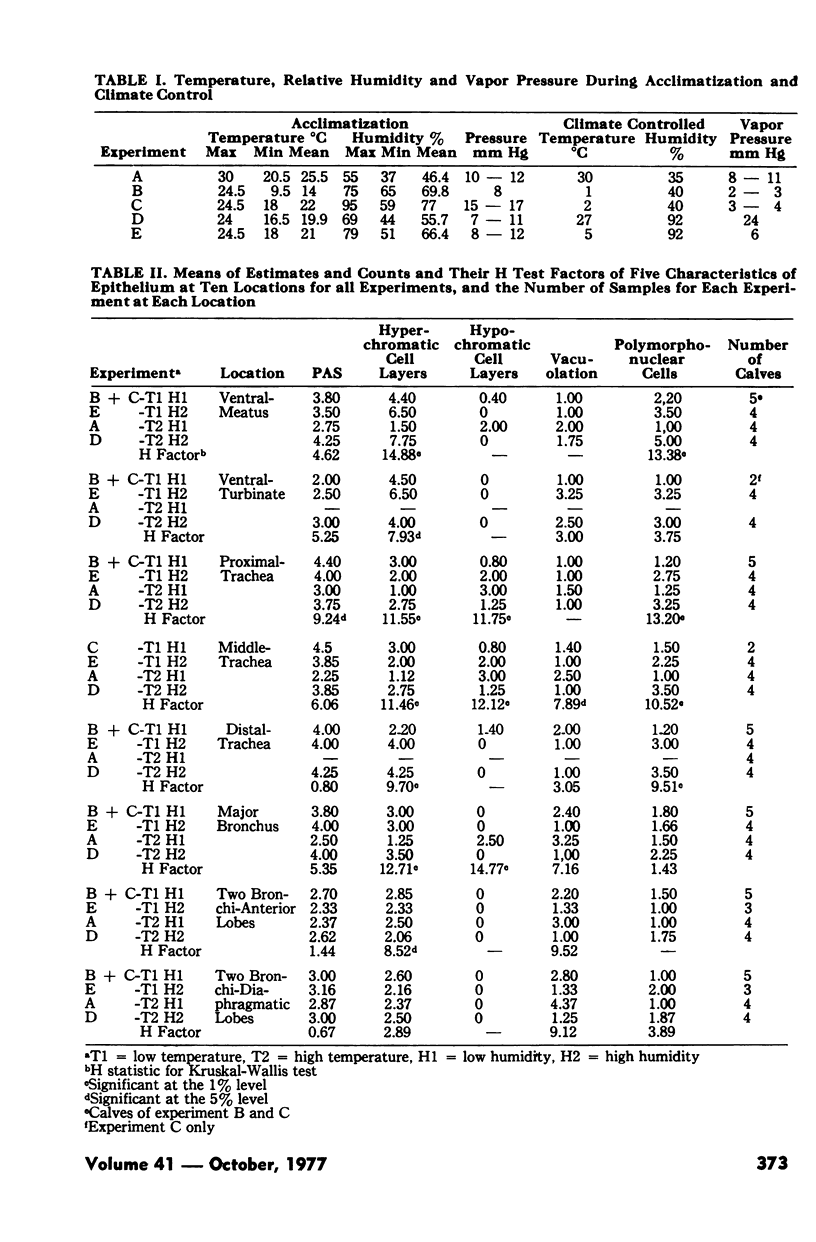
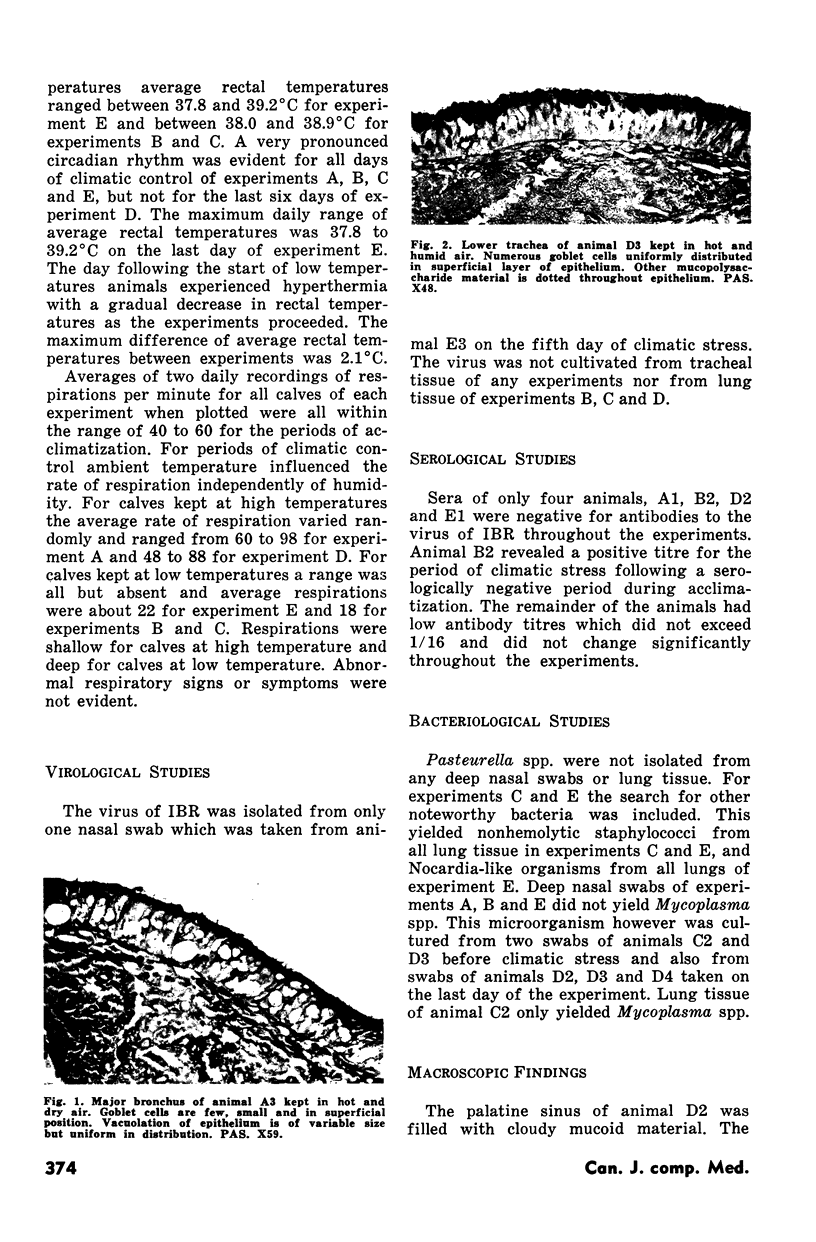
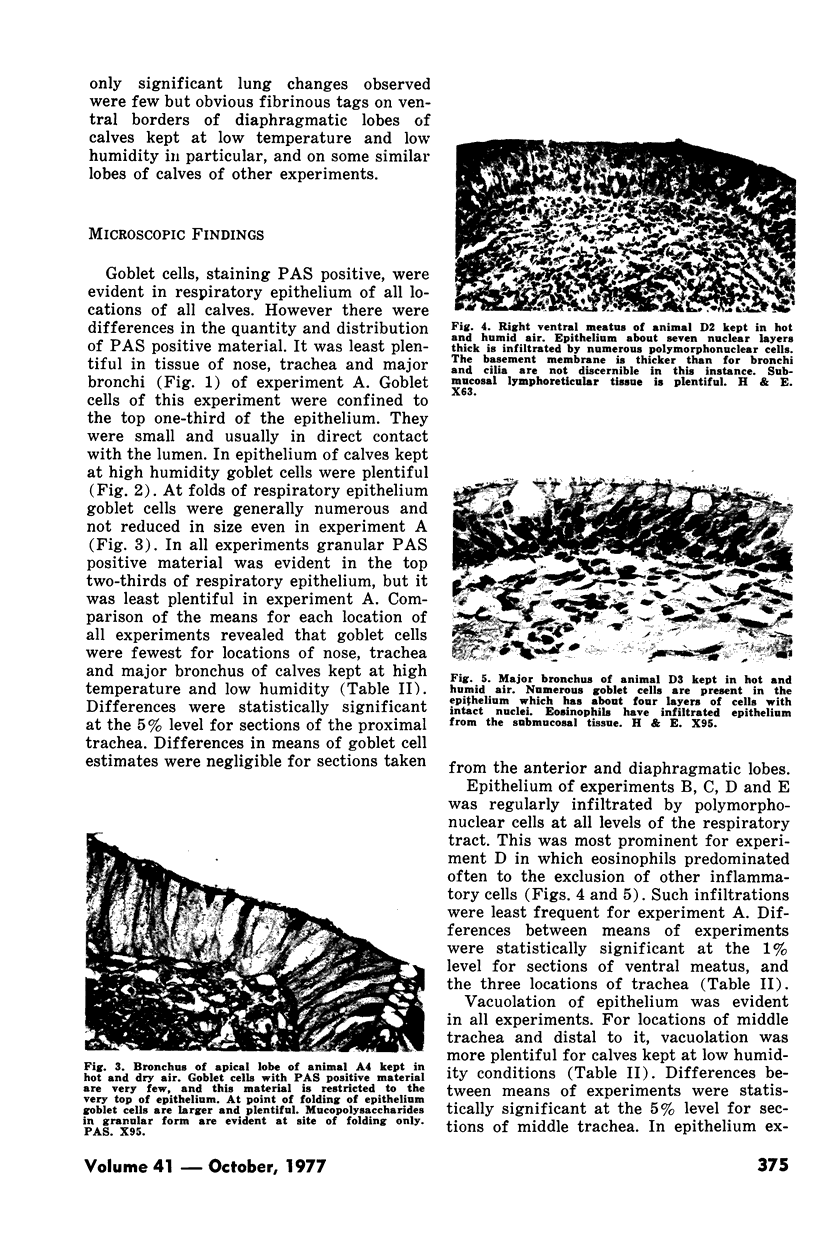
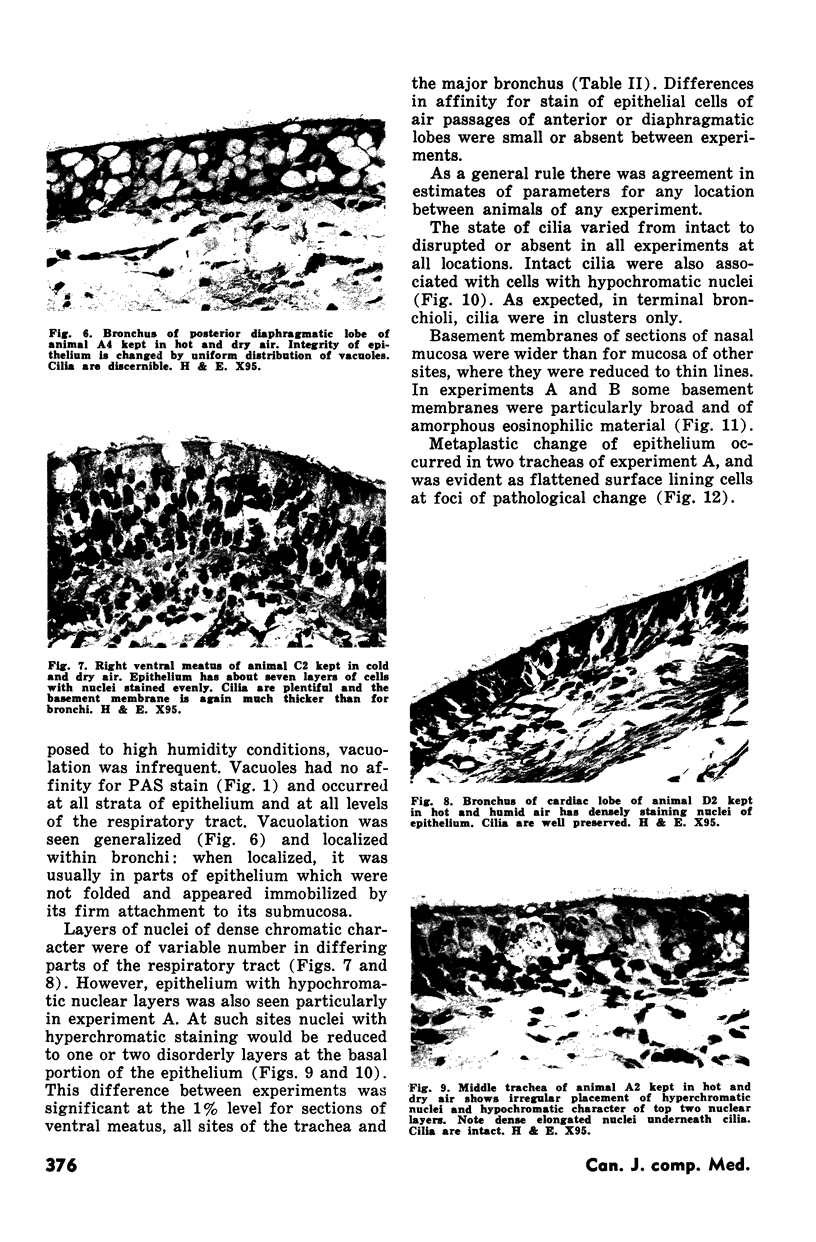
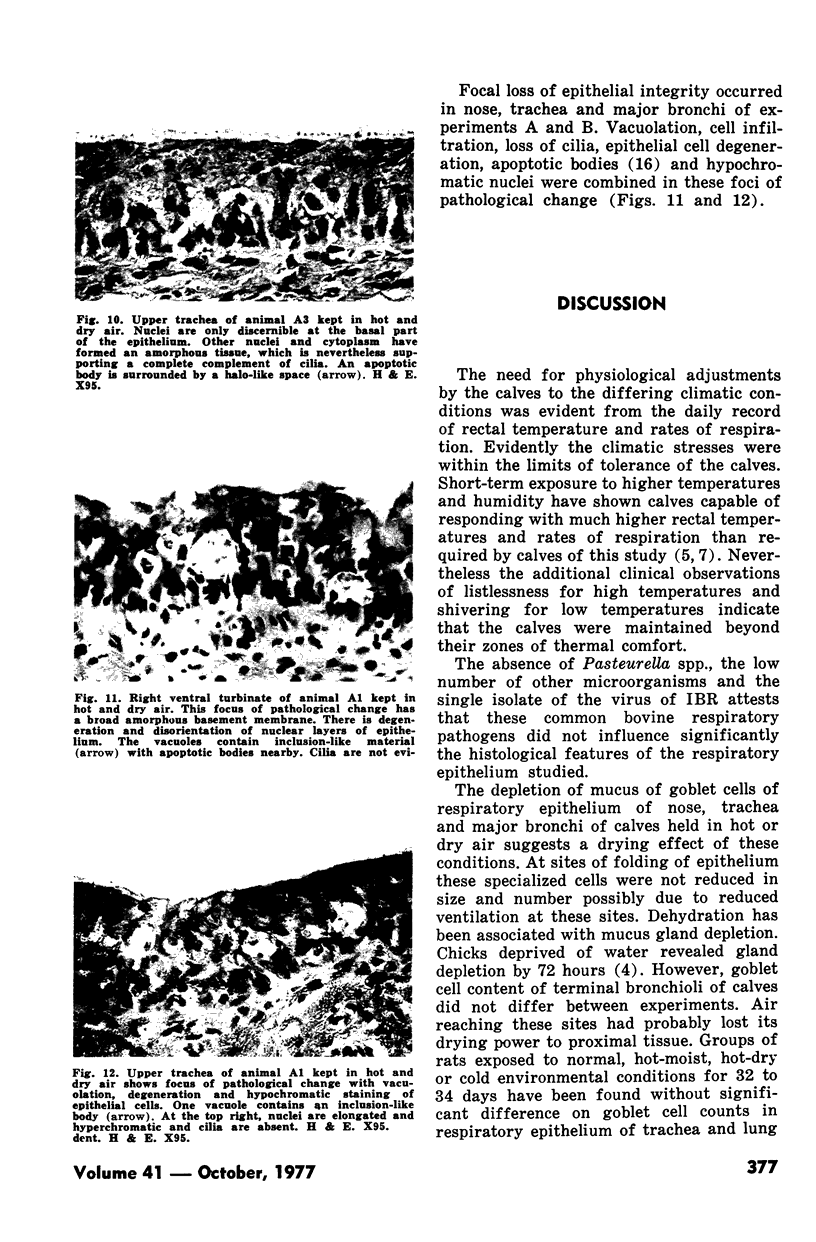
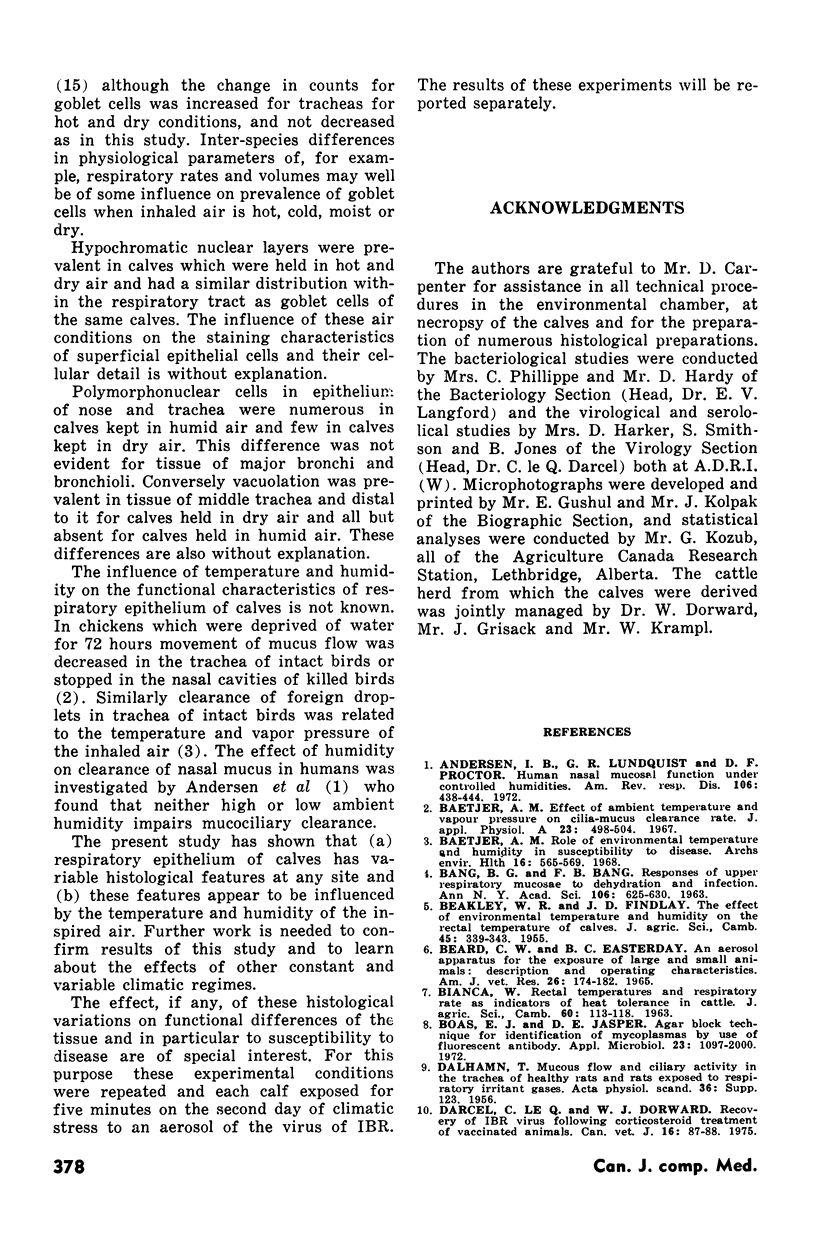
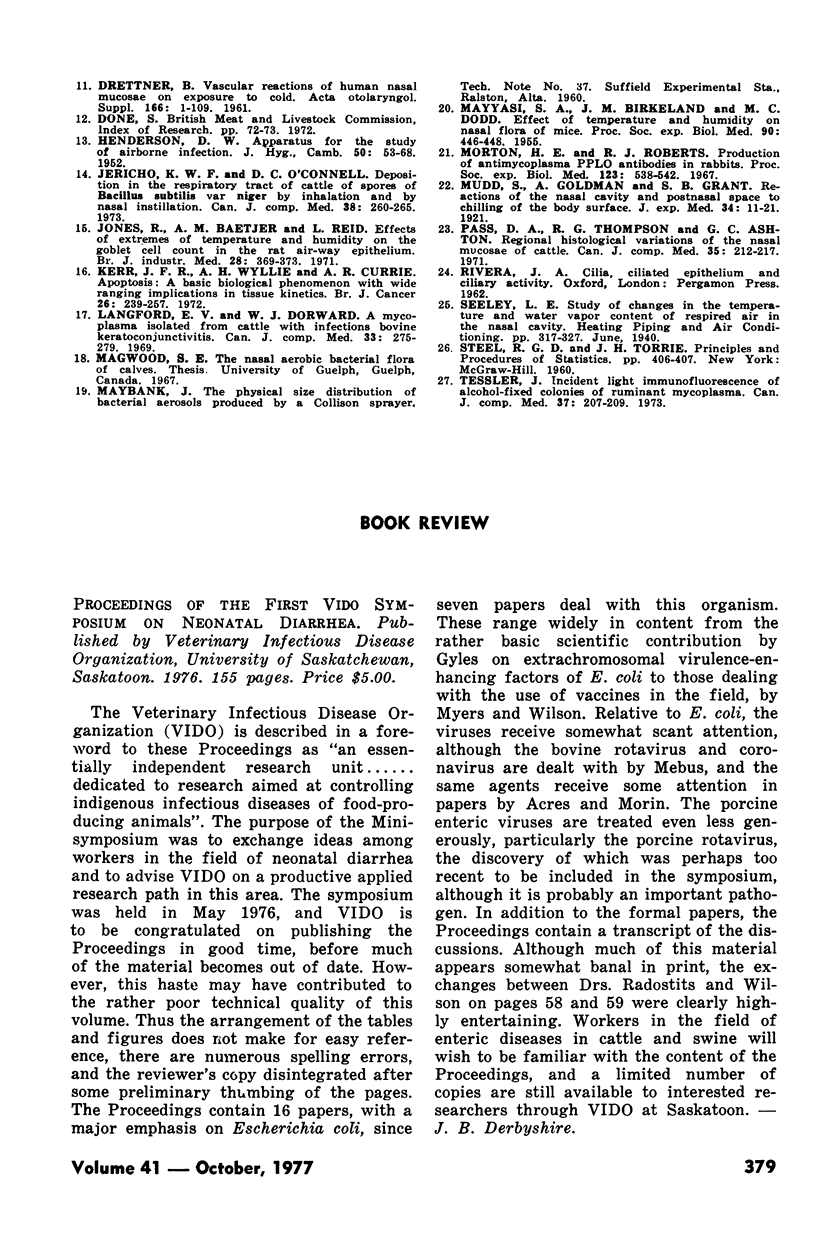
Images in this article
Selected References
These references are in PubMed. This may not be the complete list of references from this article.
- Andersen I. B., Lundqvist G. R., Proctor D. F. Human nasal mucosal function under four controlled humidities. Am Rev Respir Dis. 1972 Sep;106(3):438–449. doi: 10.1164/arrd.1972.106.3.438. [DOI] [PubMed] [Google Scholar]
- BANG B. G., BANG F. B. Responses of upper respiratory mucosae to dehydration and infection. Ann N Y Acad Sci. 1963 Mar 30;106:625–630. doi: 10.1111/j.1749-6632.1963.tb16669.x. [DOI] [PubMed] [Google Scholar]
- BEARD C. W., EASTERDAY B. C. AN AEROSOL APPARATUS FOR THE EXPOSURE OF LARGE AND SMALL ANIMALS: DESCRIPTION AND OPERATING CHARACTERISTICS. Am J Vet Res. 1965 Jan;26:174–182. [PubMed] [Google Scholar]
- Baas E. J., Jasper D. E. Agar block technique for identification of mycoplasmas by use of fluorescent antibody. Appl Microbiol. 1972 Jun;23(6):1097–1100. doi: 10.1128/am.23.6.1097-1100.1972. [DOI] [PMC free article] [PubMed] [Google Scholar]
- Baetjer A. M. Effect of ambient temperature and vapor pressure on cilia-mucus clearance rate. J Appl Physiol. 1967 Oct;23(4):498–504. doi: 10.1152/jappl.1967.23.4.498. [DOI] [PubMed] [Google Scholar]
- HENDERSON D. W. An apparatus for the study of airborne infection. J Hyg (Lond) 1952 Mar;50(1):53–68. doi: 10.1017/s0022172400019422. [DOI] [PMC free article] [PubMed] [Google Scholar]
- Jericho K. W., O'Connell D. C. Deposition in the respiratory tract of cattle of spores of Bacillus subtilis var niger by inhalation and by nasal instillation. Can J Comp Med. 1974 Jul;38(3):260–265. [PMC free article] [PubMed] [Google Scholar]
- Jones R., Baetjer A. M., Reid L. Effect of extremes of temperature and humidity on the goblet cell count in the rat airway epithelium. Br J Ind Med. 1971 Oct;28(4):369–373. doi: 10.1136/oem.28.4.369. [DOI] [PMC free article] [PubMed] [Google Scholar]
- Kerr J. F., Wyllie A. H., Currie A. R. Apoptosis: a basic biological phenomenon with wide-ranging implications in tissue kinetics. Br J Cancer. 1972 Aug;26(4):239–257. doi: 10.1038/bjc.1972.33. [DOI] [PMC free article] [PubMed] [Google Scholar]
- Langford E. V., Dorward W. J. A mycoplasma isolated from cattle with infectious bovine keratoconjunctivitis. Can J Comp Med. 1969 Oct;33(4):275–279. [PMC free article] [PubMed] [Google Scholar]
- MAYYASI S. A., BIRKELAND J. M., DODD M. C. Effect of temperature and humidity on nasal flora of mice. Proc Soc Exp Biol Med. 1955 Nov;90(2):446–448. doi: 10.3181/00379727-90-22060. [DOI] [PubMed] [Google Scholar]
- Morton H. E., Roberts R. J. Production of anti-Mycoplasma (PPLO) antibodies in rabbits. Proc Soc Exp Biol Med. 1967 Jun;125(2):538–543. doi: 10.3181/00379727-125-32140. [DOI] [PubMed] [Google Scholar]
- Pass D. A., Thomson R. G., Ashton G. C. Regional histological variations of the nasal mucosa of cattle. Can J Comp Med. 1971 Jul;35(3):212–217. [PMC free article] [PubMed] [Google Scholar]
- Tessler J. Incident light immunofluorescence of alcohol-fixed colonies of ruminant mycoplasma. Can J Comp Med. 1973 Apr;37(2):207–209. [PMC free article] [PubMed] [Google Scholar]
- le Q Darcel C., Dorward W. J. Recovery of infectious bovine rhinotracheitis virus following corticosteroid treatment of vaccinated animals. Can Vet J. 1975 Mar;16(3):87–88. [PMC free article] [PubMed] [Google Scholar]














